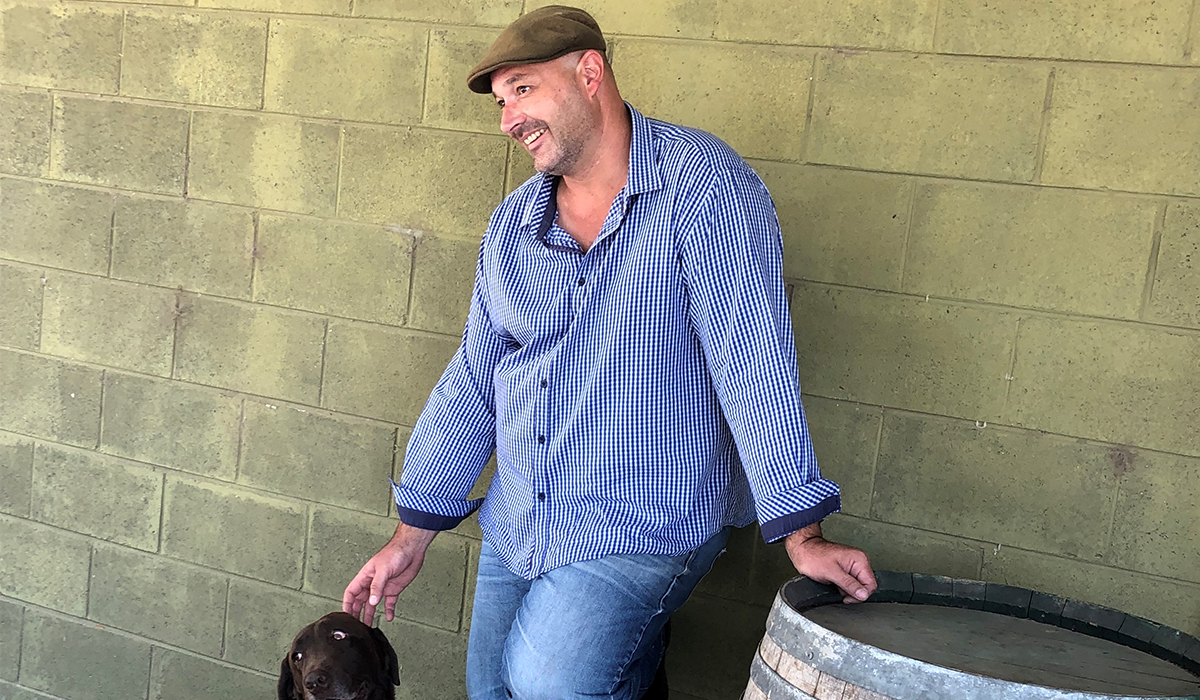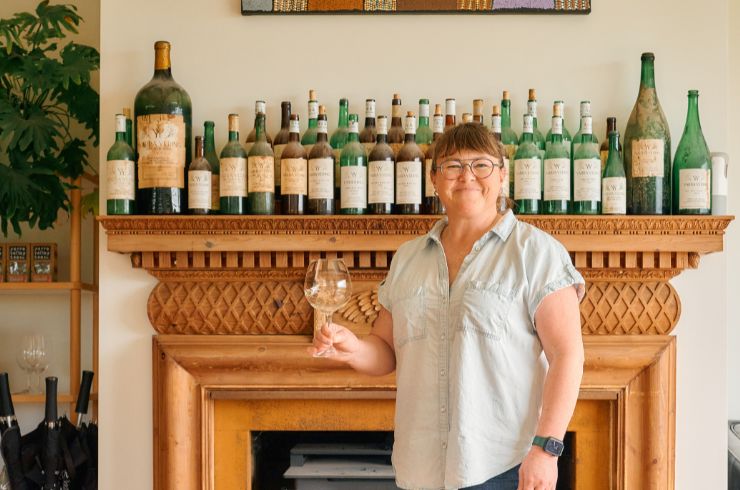Australian grenache is having a well-deserved moment, previously the domain of blends, its increasingly represented as a stand-alone varietal thanks to its ethereal intensity and ability to reflect the intricacies of the terroir in which was grown.
South Australia well and truly led the grenache charge Down Under. It was here that vines were first planted in the late 1800s for fortified wines – today’s top producers lay claim to gnarly 100-plus year-old bush vines that equal concentration and complexity in the bottle. That said, the enduring popularity of single-site Aussie grenache has inspired other warm-climate regions to stake their claim, too, all of which propels the varietal to greater heights on these shores.
We spoke to four producers from the Murray Darling, Eden Valley, Barossa Valley and McLaren Vale about what makes their grenache unique, how they approach the winemaking process and how their evolved their process.
Candy Jonsson – Zilzie Wines, Murray Darling VIC
H. What makes Zilzie grenache unique?CJ. Our grenache stands out for its fragrant, bright aromatics of pomegranate, cherry, raspberry, rose petal, redcurrant, orange peel and violets, while floral spice and cinnamon add complexity. Supple tannins, a medium body and perfect fruit weight achieving impeccable balance.
H. How do you approach the winemaking process?
CJ. With meticulous care, fruit is hand-harvested from low-irrigation Barossa vineyards. A portion of whole bunches adds to the aromatics, with gentle maturation in new and two-year-old oak. These practices yield wines of exceptional character and inspiration.
H. How has your winemaking style evolved?
CJ. Each vintage always brings subtle changes due to seasonal and climatic conditions. Variables like yield, ripeness, whole bunch proportion and time on skins may vary. However, maturing vines and evolving climate also influence our winemaking process, allowing us to adapt and refine over time. These experiences deepen our understanding, resulting in grenache that reflects the unique characteristics of each vintage.
Kevin Glastonbury – Yalumba, Barossa SA
H. What makes Yalumba grenache unique?KG. We strive to showcase terroir and craft wines with medium weight and fresh red berry fruits. They exhibit purity of flavour, with acid, tannin and palate structure giving definition. Certainly, a more elegant style of wine that is just so friendly and drinkable.
H. How do you approach the winemaking process?
KG. My approach to Grenache has always been to let the wine speak for itself. Using winemaking methods like whole clusters/berries, partial carbonic maceration and long-term post ferment maceration, all accentuate the style of the fruit from the vineyard site where the grapes are grown. We have always used older oak, of at least five years and up to 10 years old. This ensures we do not hinder the pure fruit beauty that grenache can exhibit.
H. How has your winemaking style evolved?
KG. There’s a sense that right now grenache’s time has come. Over the years, I’ve been privileged to have worked with some amazing and significantly historic old grenache vineyards. It’s an exciting time to be making and enjoying grenache.
Scott Higginson – Vindana Wines, Barossa Valley SA
H. What makes Vindana grenache unique?SH. We strive to produce wines that are a true reflection of their origin, and grenache is no exception. The vineyard where the grapes are sourced has a unique microclimate and soil composition, which gives the wine a distinct character.
H. How do you approach the winemaking process?
SH. We believe that great wines are made in the vineyard, which is why we work closely with our growers to select only the best grapes from top-quality sites. Our commitment sustainability means minimal intervention in the winery, with wild-yeast fermentation and a hands-off approach. Handcrafting small batch wines presents unique challenges, but it also allows us to pay close attention to every detail.
H. How has your winemaking style evolved?
SH. Our winemaking process has evolved over as we've gained a deeper understanding of the terroir of the Barossa Valley. With each vintage, we make adjustments to better reflect the unique character of that particular harvest. Grenache can be quite a chameleon, often taking time to reveal its personality. However, it has a great tendency to reflect the sense of place. As such, we embrace this expression of the land and let each vintage tell its own story.
Alex Bratasiuk – Clarendon Hills, McLaren Vale SA
H. What makes Clarendon Hills grenache unique?AB. We source fruit from an old vine, dry grown and high-altitude site, located above the famous sands in a very rocky section of Blewitt Springs. The vines are planted in ironstone, shale and schist-rich geology and forge wines with mineral finesse and an exotic varietal spectrum of characters.
H. How do you approach the winemaking process?
AB. Clarendon Hills runs on a minimal intervention methodology. Our attention is entirely geared towards capturing the magic trapped inside those thick, old-vine grenache skins. Grapes are handpicked and fully destemmed, wild yeast fermented and left on skins for 28 days.
H. How has your winemaking style evolved?
AB. Our focus was once richness and decadence, however the modern Clarendon Hills’ house style has evolved towards freshness and approachability – whereby we want our wines to communicate their approachability and complexity on release. A really young, well-made and world class grenache is something to behold.Latest Articles
-
News
Yarra Yering has released its 2023 flagship wines – marking winemaker Sarah Crowe’s 10th vintage
17 Apr 2025 -
Wine Lists
Four 'recommended' wines to try
16 Apr 2025 -
Travel
Where to eat, drink and stay when travelling around the Murray Darling wine region
16 Apr 2025 -
Travel
Three unique restaurants to book a table at this Easter – each located within a Victorian wine region
11 Apr 2025








